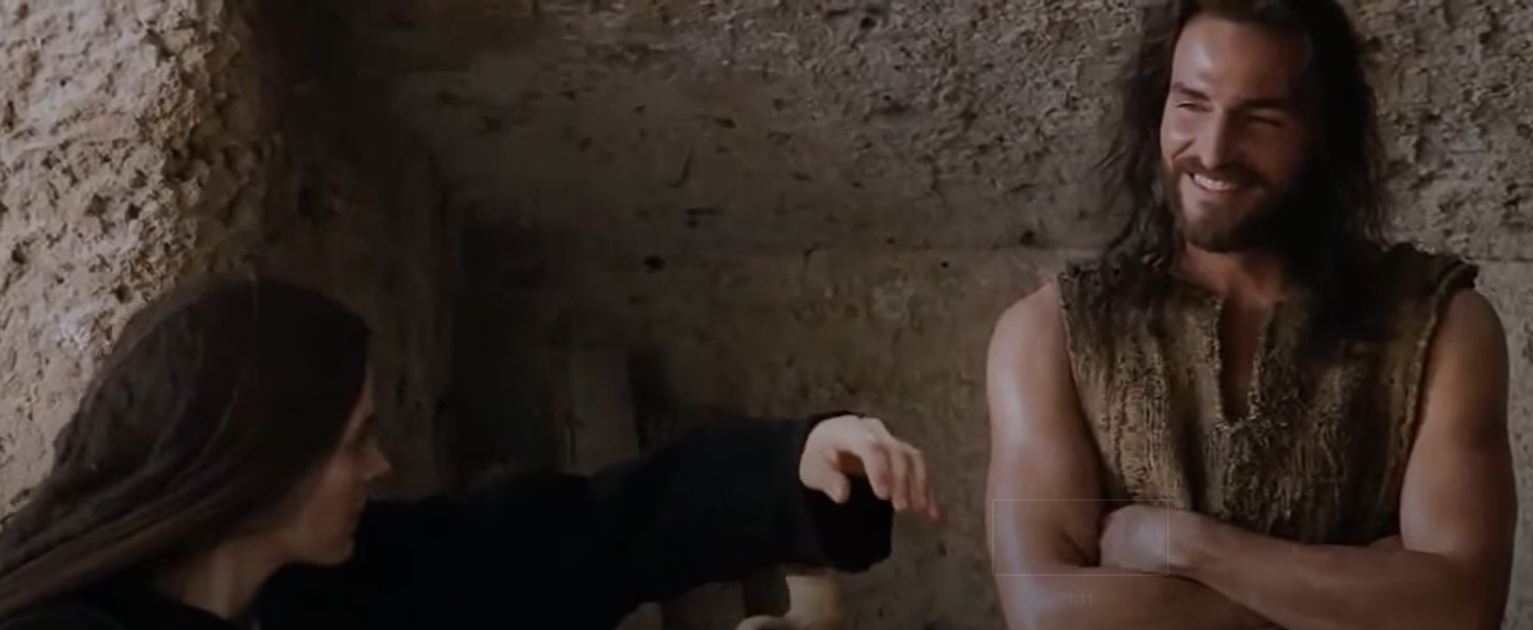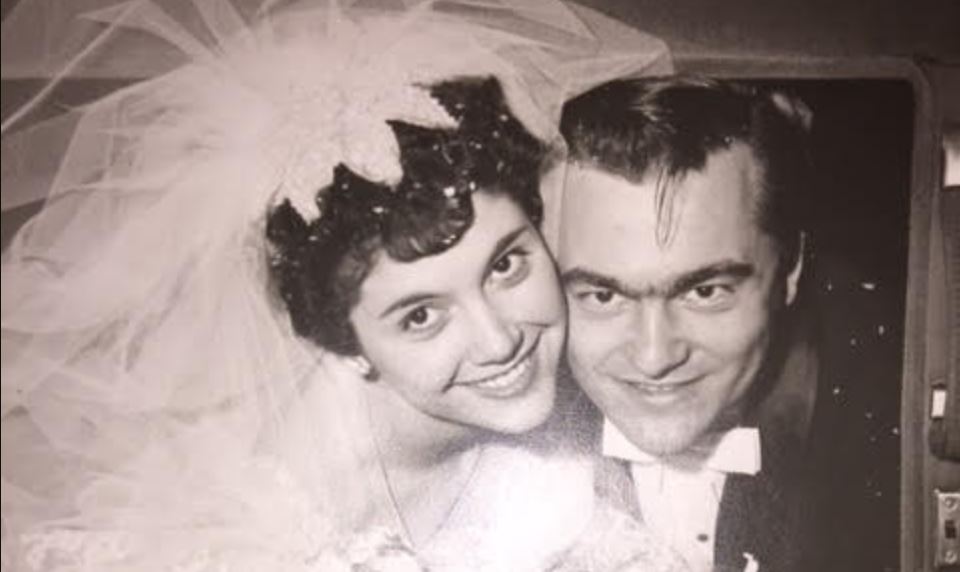Having spent most of the month of August in the hospital (an event I am still processing and am not yet ready to write about), I’ve had a lot of time on my hands.
My husband was kind enough to bring me a rosary and a few beloved icons, including Blessed Solanus Casey and Our Lady of Perpetual Help from home, and we created a makeshift “oratory” on a windowsill that looked eastward, permitting me to wonder at the sunrise each morning as my blood was drawn.

Pondering the beauty before me, a pretty red crystal brought by a friend would remind me of the question asked by women before the tomb of Christ: “Who will roll away the stone?” (Mark 16:3)
I like the question because it reflects our daily vulnerability and anxieties, plus our newer, more unique ones: I have these plans; how am I going to accomplish them? What can I still do of myself; with what do I need help? On what or on whom am I wholly dependent in order to do some things?
Can I handle a loss of physical independence and autonomy?
The answers always arrived as more questions: What do you choose to surrender? (My pride, control, feelings, how about nothing?)
What do you choose to hold on to? (Um…the same?)
And always: What do you really ask? (You know, O Lord; I can’t even articulate all of it, but you know!)
Finally: “I know the plans I have for you…” (Jer 29:11)
Often, I found myself praying the Joyful Mysteries of the Rosary, which is somehow the most consoling to me. Beginning it with a simultaneous study of the Marian icon and marveling at how Creator and Creature shared the same flesh, the same blood, entwined, together, because it is the whole story, right there.
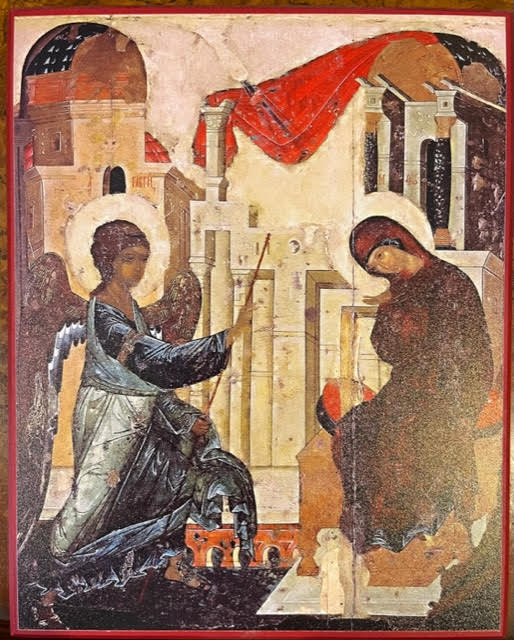
The Annunciation: Since Eden, God’s purpose, slow and baffling, yet inexorable, has been to restore all things in Him. There are so many things we do not know. Mary, born without the stain of the “necessary sin of Adam,” is hailed as “full of grace,” by Gabriel who has been tasked with obtaining her consent to the most improbable thing: to be the Ark of a New Covenant, the Host for the Lord of Hosts, who requires her pristine flesh and blood before he can shed his own as the spotless Lamb and acceptable sacrifice?
We always assume that this was the first time this question had been asked, and perhaps it was; perhaps the human campaign needed to be where it was, before the New Ark could be created in grace. But what if other young women had been similarly graced, earlier, yet were unable, in their freedom, to manage the fiat, the complete detachment from the opinions and schemes of the world, which would allow participation in God’s difficult, mysterious scheme?
Grace gives us the ability to believe, to trust and go forward, but we know we shrug off grace all the time in order to go our own way, satisfy our own minds, serve our attachments.
It does not matter if other women had been privileged with a similar visit by Gabriel; Mary said “yes.” That is what matters. Not knowing the Mind of God, she could not know that her act of surrendering flesh and blood would find its mirror and completion in another such surrender of what is (again) her own flesh.

The Visitation: Mary visits her cousin, Elizabeth, who rushes to greet her and cries out with mysterious knowledge: “whence is this, that does the mother of my Lord come to me?” Mary blooms into the glorious Magnificat — a prayer that echoes her ancestor, Hannah. In Elizabeth’s womb, the forerunner leaps for joy! Flesh-and-blood recognizing flesh-and-blood, but alive with something more, something as yet undefined. The human family is yet mystical, and God’s own, shouting out in discovery of oneness.
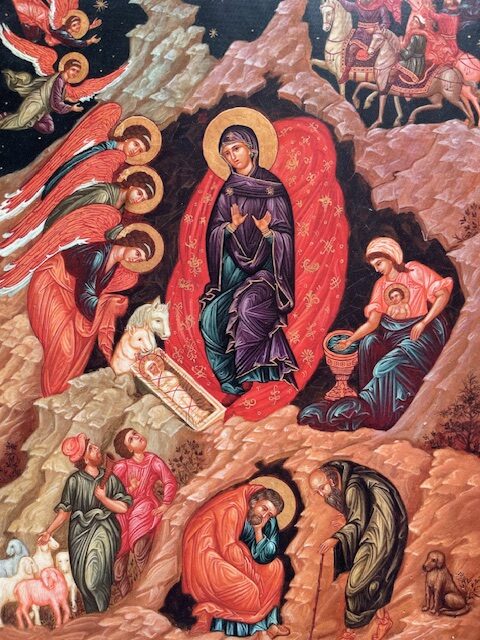
The Nativity of Our Lord: And then there is a crack in history as the God of Israel does something truly unthinkable, becoming enfleshed and setting a tent with us. He does not come as an oddity, as a “better,” or as something unrecognizable, demanding the fear and obsequiousness of all in his path. He is born of flesh, born of blood; Mary’s own blood runs in his veins and while he is wholly her own, he is wholly the world’s.
He condescended to enter into the pain and fear, the tumult and whirlwind of the world, not merely “dwelling” among us as lofty king, but literally “with” us, with hunger, the capacity for injury and doubt.
God entered in, not with a cacophony of noise and a display of raw power, but as the humblest and most dependent of creatures: a baby, lying in a manger, a place for the feeding of animals. He, who became Food for the World, entered with silence, as though he had put his finger to the quivering mouth of a troubled, sobbing world and said, “Shh . . . it is all right, I’ll keep you company . . . “
God submits to Creation, in order to save it. No wonder the heavens were rent with a joyful song. No wonder shepherds and kings were amazed.

The Presentation: Joseph and Mary bring Jesus to the temple. Imagine how difficult it was to stay hydrated while traveling even a short distance, especially for a new mother who is nursing her babe. One needed to know where all of the wells were, and to have water nearby. The Creator is dependent upon the same substance upon which his spirit moved in the beginning (Gen 1:2). God-made-Flesh is now brought to the priests; Jesus is circumcised like every Jewish male, his foreskin shed. Even he, Son of Mary, Son of God, must be vulnerable, sensitively exposed to God and the world in this primal way. Flesh is cut, blood is stanched, the baby yelps and is quickly embraced and consoled by the mother who sees her child’s blood for the first time (but not the last) and hates the sight of it.
Here, the God of All Consolations cries out in pain, completely vulnerable, allowing humanity to succor him. Anna and Simeon have been awaiting his appearance; they recognize the Incarnation, and Simeon speaks words that must simultaneously soothe and grieve Mary’s heart.
Her heart, after all, is his heart, too. He is us.
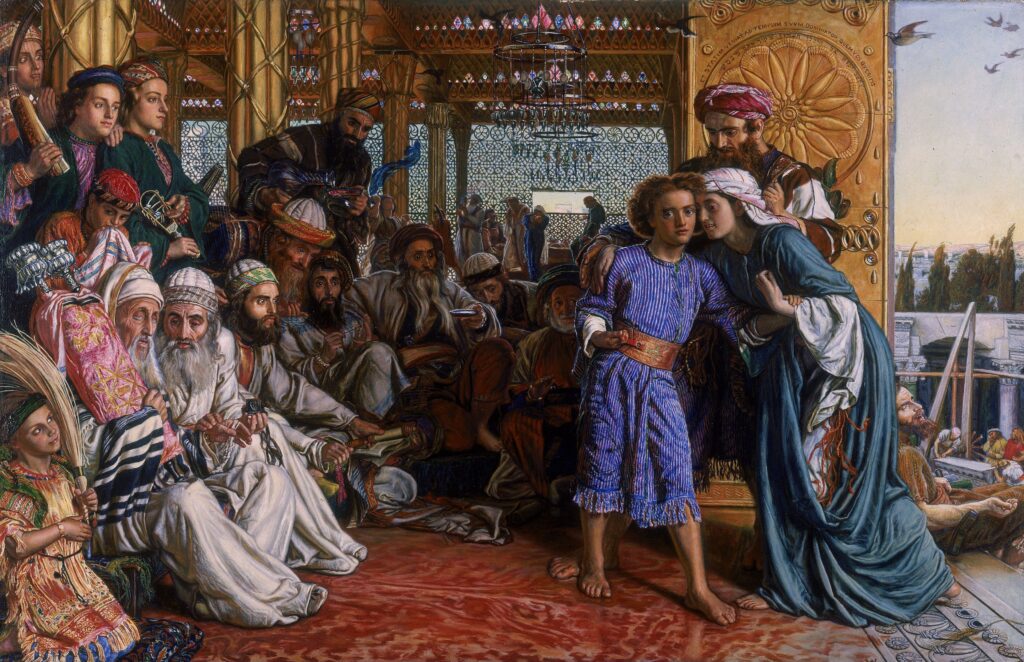
The Finding of Our Lord in the Temple: We jump ahead twelve years; the adolescent Jesus has stayed behind in Jerusalem. Three days he is there, mirroring the three days in the tomb.
I love that Mary and Joseph, who love Jesus and live with him, and who know him well, must still seek him out, like the rest of us. Flesh seeks after flesh and cries out, “where?” and then, “why do you? How could you?“
Flesh seeks after God, and God is found, but not fully understood. Not only is God found, but then God submits, because this God, over and over again, tries to teach us by his own example. As God yielded to Israel’s obstinacy and gave them a King, so he yields to Mary and Joseph.
Later he will submit, again, flesh and blood surrendered, before the eyes of his mother and the whole world, heart pierced, for the life of the world.
The lesson, over and over, is that fulfillment and completion lies in surrender, in the fiat, in the “yes,” in the detachment to all else; the submission of flesh and blood, mind and heart, for the wholeness of the soul.
Flesh cries out, “O Love, where, why?” God cries out, “Here! O Love, know!”

All images by Elizabeth Scalia (Icons from my own collection) except “The Finding of the Savior in the Temple” by William Holman Hunt/Public Domain and Leonardo’s “Annunciation” which is in the public domain.
